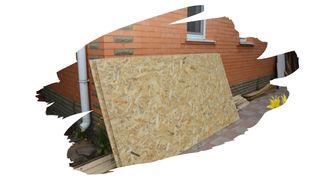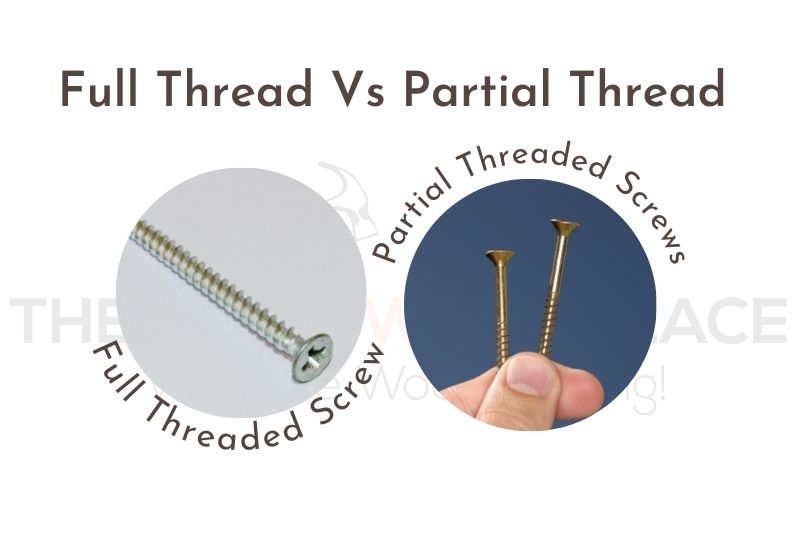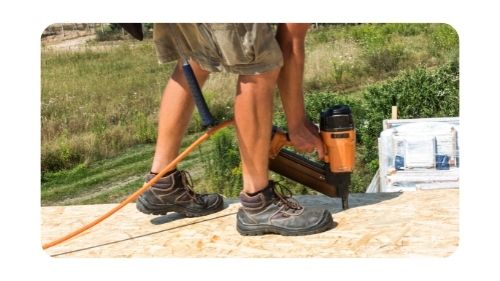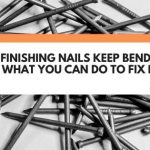So, you’ve decided your next project is going to involve building with OSB. But, you want to use a fastener that you can be sure will hold those boards in place… come rain or shine.
Now, your main fastener choices for OSB board pretty much boils down to using either screws or nails. But which one’s the right choice for your project?
You are best off using nails to fasten OSB boards into place. Not only are nails faster to install, they are less brittle and much stronger than screws too. And that shear strength comes in handy if those OSB boards will be bearing any load (such as structural panelling).
Now, having said that, screws still have one major advantage over nails. And that big advantage lies in their ability to secure OSB more tightly into place. Thanks to their corkscrew thread, screws don’t loosen as easily as nails do.
So, if that OSB board isn’t going to be used in any load-bearing structure, screws may be a better option.
Related Post: Why You Should Use OSB (Not Plywood) For Your Attic Floor
But, OSB boards can be fairly heavy (compared to other manufactured wood such as Plywood). In which case, the type of screw you use to fasten OSB needs to be one that is not fully threaded.
Referred to as ‘Partial Threaded Screws’, these screws don’t have a corkscrew thread all the way along their length.
Still feeling a little befuddled by it all? Well, not to worry, because we dive into this and more below…

This post may contain affiliate links to products that we receive a commission for (at no additional cost to you). Learn more here.
OK, So Screws Or Nails For OSB Walls? Which One Should I Go For?
Your best option is dictated by your type of project:
For Load Bearing Projects (Walls, Subflooring, Roofing)
Stick to using nails on structural OSB.
It may take longer to hammer them into place, but the shear strength of nails gives them a big upper hand over screws.
Plus, if you use a quality nailer tool, you can easily cut that installation time in half.
Related Post: What Type Of Nailer Should I Use On Plywood?
For Non-Load Bearing Projects (Decorative Wall Panels)
You can use screws to position these OSB boards. The screws will fix them more tightly than nails.
Now, decorative wall panels aren’t load bearing. However, that OSB board could still prove heavy enough to put a bit of strain on those screws.
So, you will need to use a specially designed type of screw called a Partial Thread Screw.

The thread on these screws only partly make their way up the screws length, leaving a long shank leading to the head.
These screws give you the best of both worlds when it comes to nails vs screws. That long shank gives these screws much more shear resistance than a full threaded screw. While it’s thread-end gives its more grip and hold than a nail.
Do Screws Hold Better In OSB (Or Other Engineered Wood Like Plywood)?
Screws hold better, full stop. Their thread grips and tightens in a way that a nail simply cannot.
However, plywood specifically holds onto screws much better than OSB does, (thanks to plywood’s veneered layering).
And What Size Nails Are Used For Wall Sheathing?
If you are going to nail 7/16″ sized OSB sheathing, then you should use 6d common nails or 8d box nails.
A 6d common nail is 2 inches long with a thick shank that makes it a great all-rounder nail for general structural and construction jobs.
An 8d box nail is 2.5 inches long with a slender shank. And these nails are better at specialized jobs such as siding. However, they can still put wall sheathing in it’s place.
What Size Nails Should I Use For 7/16″ OSB Wall Sheathing? You should use 6d common nails or 8d box nails on this particular sized OSB sheathing.

So To Sum Up…
OSB is widely used in construction because of its low cost and great structural versatility. And, most structural wood work typically involves placing wood boards into load-bearing positions.
So, if that is the case for your OSB boards, then you should opt to use nails (and skip over those screws).


